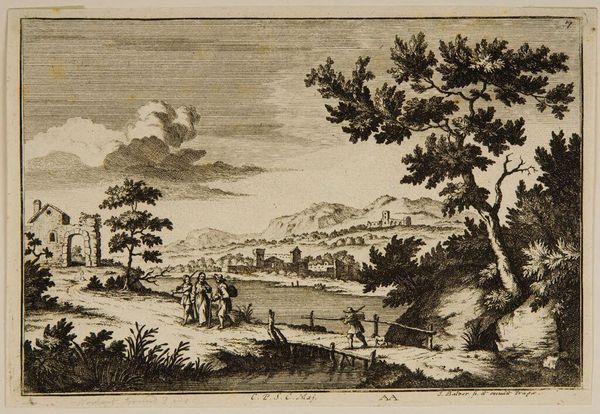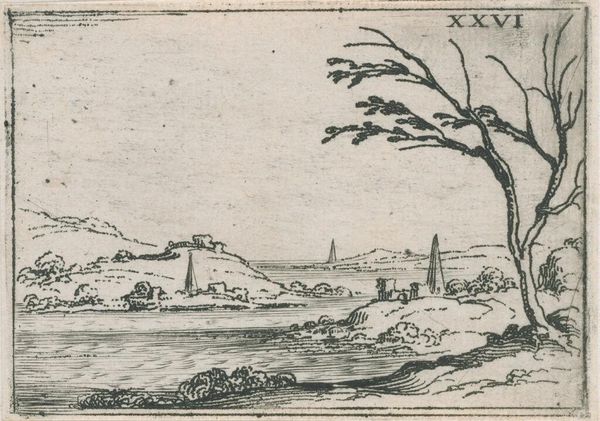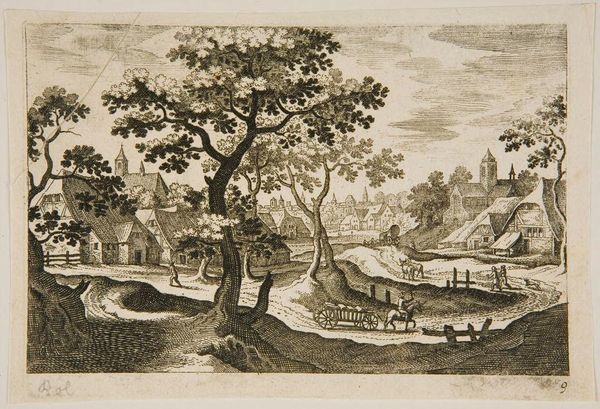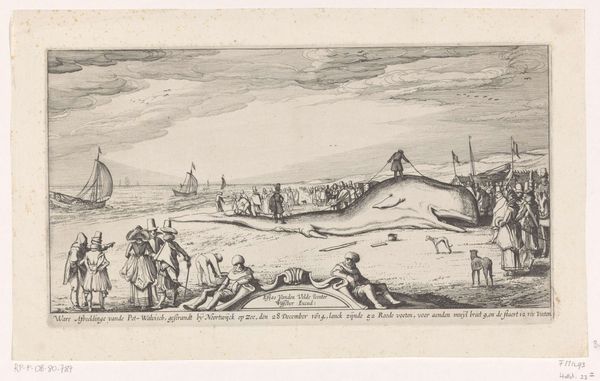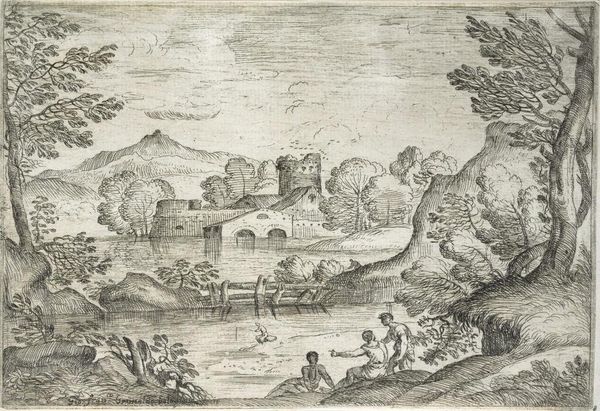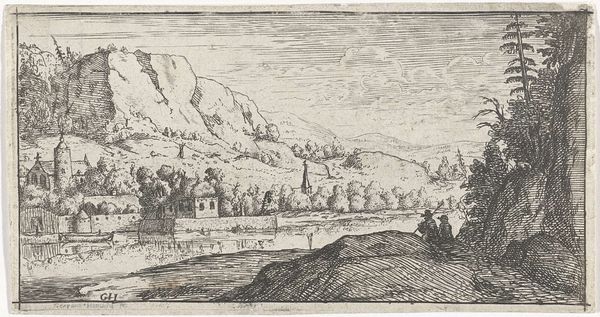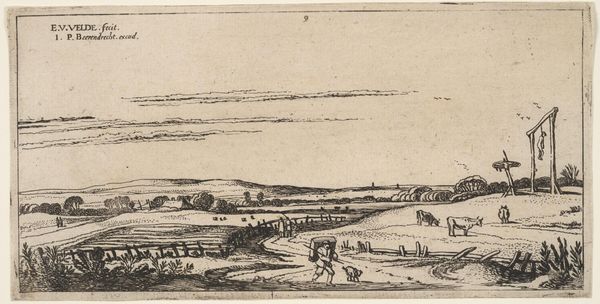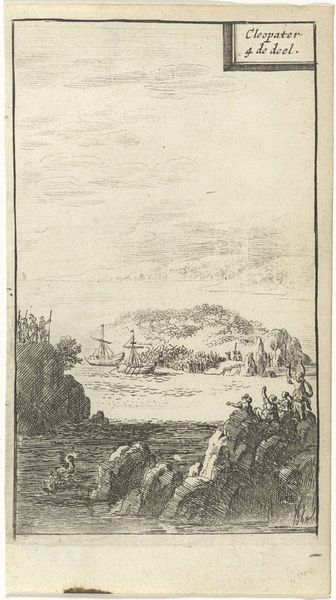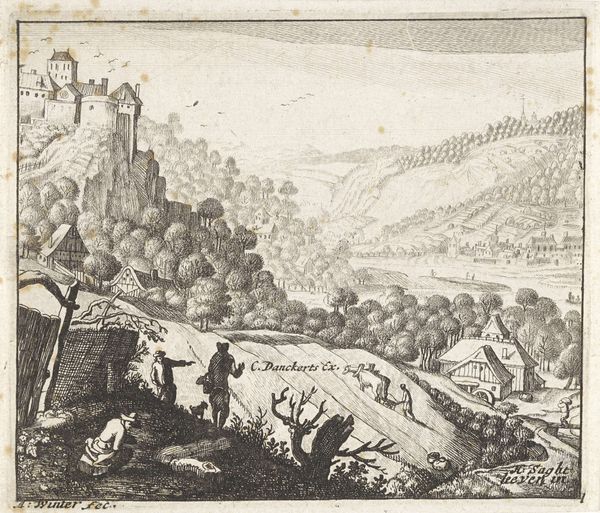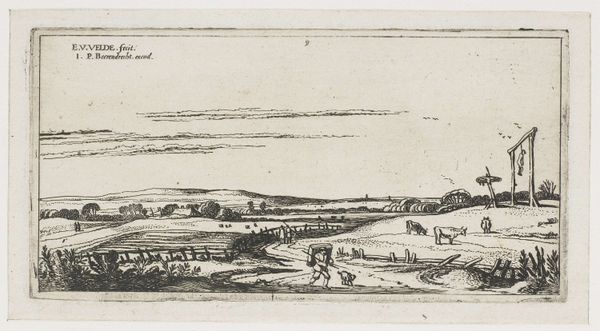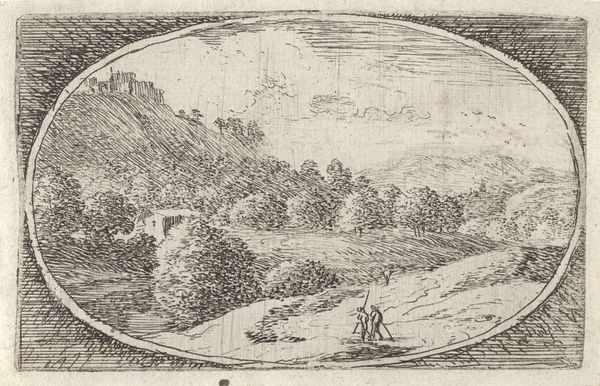
Copyright: CC0 1.0
Curator: Welcome, everyone. Before us, we have Jacques Callot’s “Watchful Eye,” from around the early 17th century. Editor: This evokes a really unsettling feeling. It’s such a stark image—the contrast between the landscape and that… that eye on a stalk. Curator: Callot's printmaking process, with its etching and engraving, allows for such crisp lines, heightening that contrast. The materiality of the line becomes a metaphor for observation itself, a sort of panoptic gaze. Editor: True, but it also makes me consider the labor behind the print. The meticulousness of the engraving underscores a rigid social hierarchy where the eye, perhaps representing authority, surveys the flock. Curator: An astute interpretation. The semiotic weight of the watchful eye is undeniable. Editor: The material conditions of its creation are deeply intertwined with the content. It is a fascinating commentary on early modern social dynamics. Curator: I agree, though I am struck more by the visual rhetoric—the way the composition guides our gaze. Editor: Ultimately, Callot’s technical skill serves a broader commentary on power structures.
Comments
No comments
Be the first to comment and join the conversation on the ultimate creative platform.
